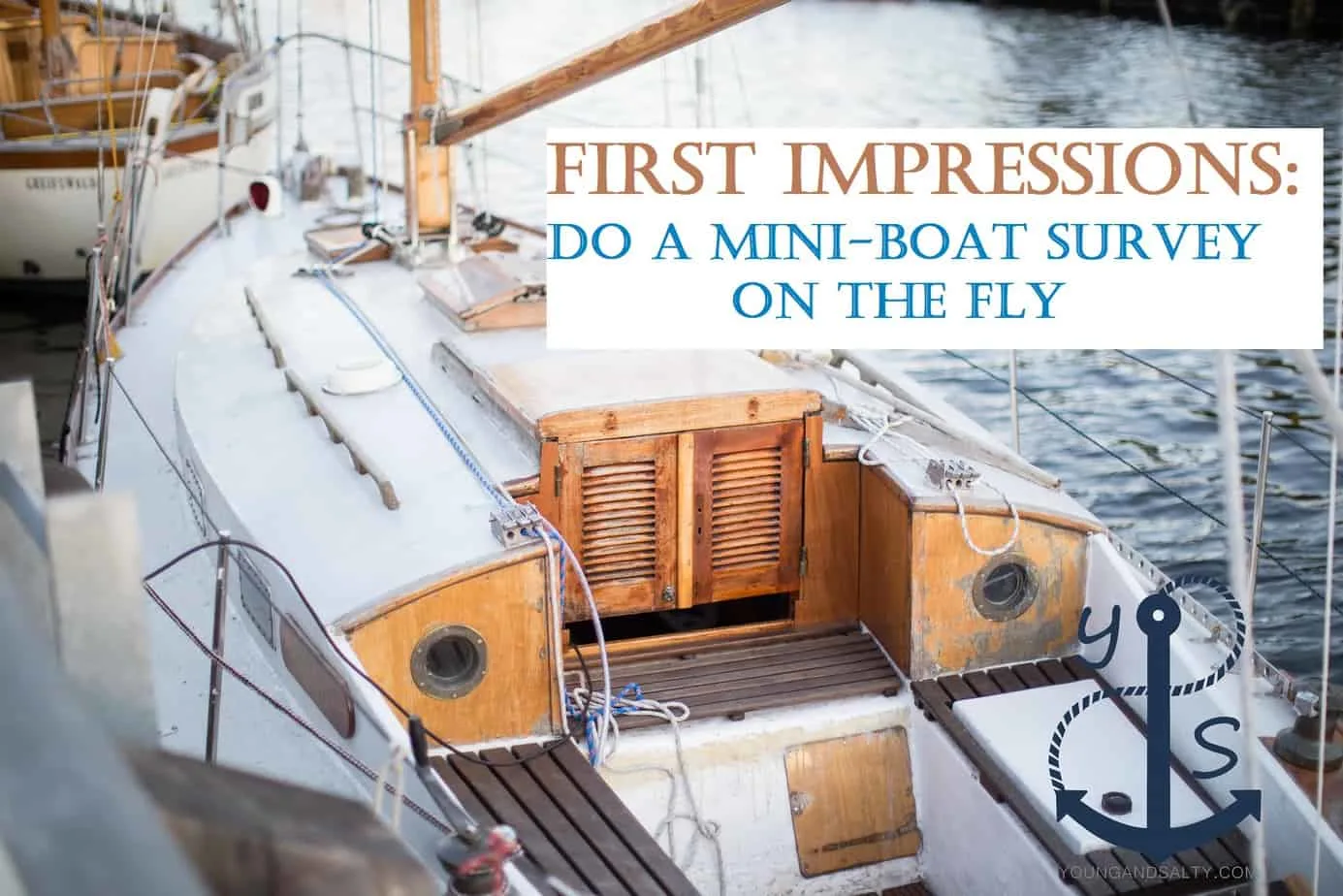Photo credit: taduuda
Quick Boat Survey – Part of our “How to Buy a Boat” series
When we are looking at boats we usually make two visits; a quick boat survey and a full boat survey. Note, neither of these replaces a full professional survey. The initial visit is focused on looking for indicators that will tell us about the things we can’t see. We have a list on our quick boat survey that we have found to be particularly well correlated to larger problems. Generally, they indicate a level of maintenance and care and also the signs of major issues.
General feeling
When we approach the boat we note the general feeling we have. Sometimes the subconscious mind picks up on things that it neglects to tell the conscious mind. Somewhat related, I remember coming home one day to my cabin in the bush and thinking “something isn’t quite right.”
Keel/hull joint
If there is a crack or discoloration between the keel and hull it suggests significant full deformation, grounding or a loose connection. Any of these issues suggest serious damage. If you see any of the above, you’re likely looking at dropping the keel. This is a HUGE job, expect it to take 100+ hours plus specialized knowledge. Furthermore the boat may be structurally unsound and unsafe.
Bottom paint and blisters
If the bottom hasn’t been properly prepped (i.e. scraped and sanded) before painting, it will have a topographical look caused by large swaths of paint peeling off and then being painted over. If there is a large build-up of paint, it is likely that the rest of the boat is equally unmaintained. If the bottom paint is in good condition are there any blisters? This is also an indication of poor maintenance. If it’s in the water, we tactfully ask the owner what the bottom paint is like.
Chain plates
According to professional riggers, rigging should be replaced every 10-15 years in the Pacific North West and every 7-12 years in warmer, saltier climates. We check the deck for softness around the chain plates and the chain plates themselves for corrosion or deterioration. Replacing these is a major job. The rigging where it connects to the chain plates also gives an indication of larger issues. A little superficial rust should come off with a cloth and fresh water and is not a big deal.
Sails
How many sails are there and what condition are they in? While a baggy sail doesn’t necessarily indicate neglect, it is a significant cost to replace down the road, and is a consideration when making comparing boats.
Bilge
A dry bilge is a great luxury and not realistic for most older boats. But it should still be clean (no oil) and the bilge pump should be working and well installed.
Engine
The engine is one of the big tell-tales of how well a boat has been maintained. If the engine is clean and in good condition that bodes well. Check owner’s knowledge of zincs in the heat exchanger as failure to replace these can mean hidden problems.
Wiring
The owner might be surprised that we start by checking wiring behind the dc electrical panel, but we have found that it is a good indication of the condition of the rest of the wiring in the boat. If it is very messy or at all corroded, you can be sure that the rest of the wiring is the same or worse.
Locker doors
We check the opening and closing of the locker doors. Deformation in the deck or hull usually translates into the locker doors not closing properly. This could indicate particularly hard sailing, a racing history or collision.
Thru-hulls
Do the thru-hulls show signs of corrosion and can you open and close them? Frozen and leaky through hulls are a sign of lack of maintenance and replacing them is a pain. Not replacing them can be dangerous.
The owner
We ask a lot of questions of the owner, keeping in mind that they might be lying through their teeth. It also gives the owner a chance to brag about keeping their boat well maintained. If they are honest the most telling questions are:
- Has the boat ever run aground?
- What are the next three things you would do to the boat?
- What have you done in the last year?
Debriefing
Usually the results of the quick boat survey are obvious. If there is a question mark, we give ourselves a couple of days to mull it over before booking a longer visit with the owner. We don’t want to waste their time or our own. In the event that we want to go back for a longer visit, we prepare ourselves to get dirty. A quick boat survey is like skiing down a powder filled run. It can be fun and exhilarating. A full survey is like being caught in an avalanche.

Robin was born and raised in the Canadian North. His first memory of travel on water was by dogsled across a frozen lake. After studying environmental science and engineering he moved to Vancouver aboard a 35’ sailboat with his partner, Fiona, with the idea to fix up the boat and sail around the world. He has written for several sailing publications including SAIL, Cruising World, and was previously a contributing editor at Good Old Boat.

